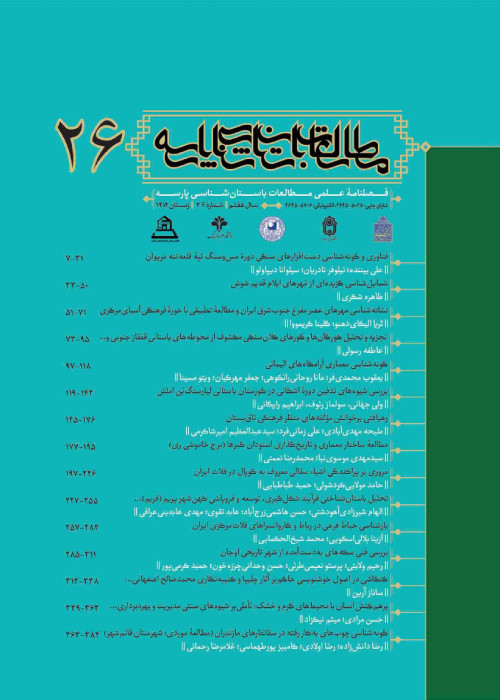The Iconography of the Camel Symbol Illustrated on the Polychrome Enobe Pottery Attributed to the Neishabur
The Polychrome Enobe pottery attributed to Neishabour is one of the unique pottery of the Islamic era, which has many divers and symbolic motifs. According to the role of the ingredients of these pottery, they were created in deep connection with the mythological and religious beliefs of the people of the third and fourth centuries AH; Therefore, the correct interpretation of these pottery designs helps to understand the social, cultural, political and religious conditions of the people of that time. One of the illustrated symbols on these pottery is the symbol of a camel, which is drawn on a Polychrome bowl and is kept in the Reza Abbasi Museum. The camel drawn on this pottery is important because it seems to be indicative of deep concepts regarding the sanctification of “Camel” in Neishabur society. Until now, no purposeful study has been done to interpret the depicted camel on this pottery; Therefore, the authors are trying to study the symbol of the camel depicted on the pottery in this essay with “Iconography” method with the approach of “Erwin Panofsky”. To achieve this goal, the questions; what is the symbolic meaning of the camel depicted on the Polychrome bowl of Neishabur in relation to the jar and the bird? The Polychrome Enobe bowl with the motif of a camel, in combination with other motifs, is derived from the beliefs of which stratum of society is Neishabur? It has been suggested that in order to get the answers to the questions, the research method adopted for the future research is a library with a descriptive-analytical-historical approach, in which the discussed pottery motifs are analyzed first, and then to interpret its symbol with Panofsky’s three-step method. The result of the study of the camel symbol is that the motif of a camel with a jar under its belly and a hoopoe bird seems to be derived from the principles of Zoroastrian purification and also the Gomiz healing properties of camels among the Muslims of 3rd and 4th centuries AH living the north east of Iran.
Iconography , Pottery , Polychrome Enobe , Neishabur , Camel , Gomiz
- حق عضویت دریافتی صرف حمایت از نشریات عضو و نگهداری، تکمیل و توسعه مگیران میشود.
- پرداخت حق اشتراک و دانلود مقالات اجازه بازنشر آن در سایر رسانههای چاپی و دیجیتال را به کاربر نمیدهد.



